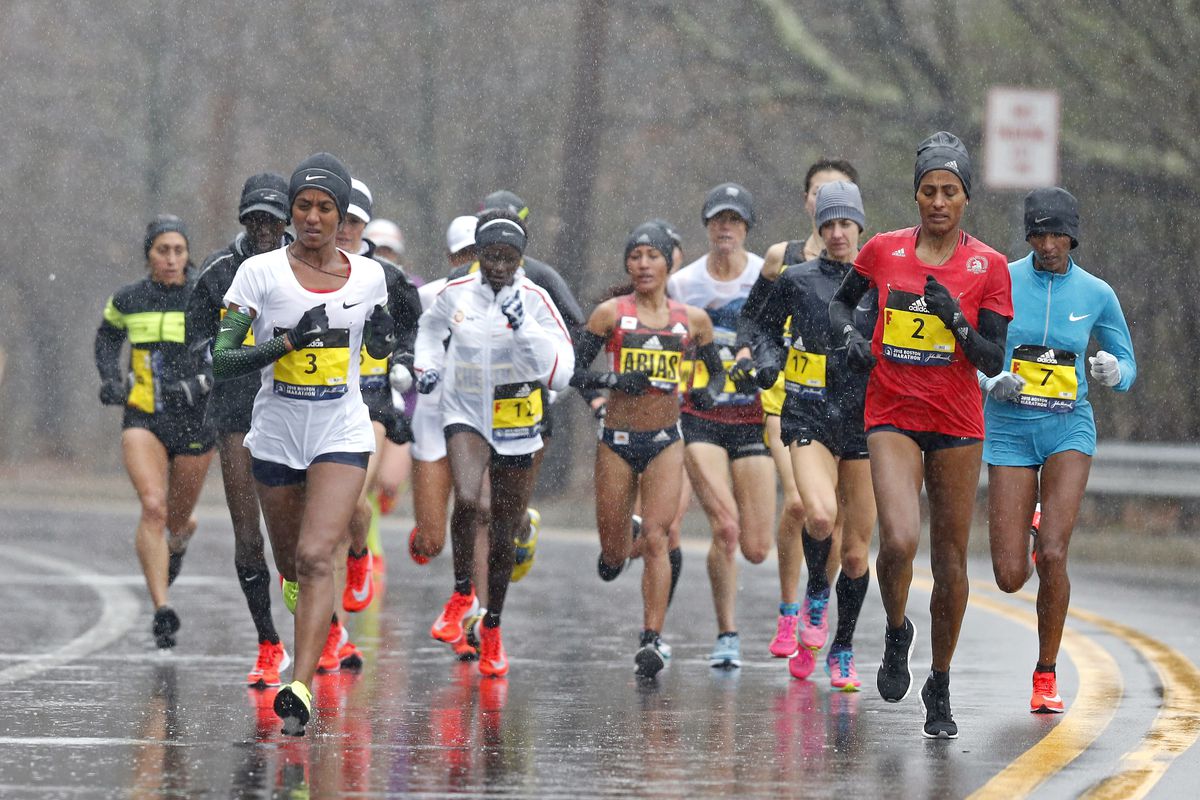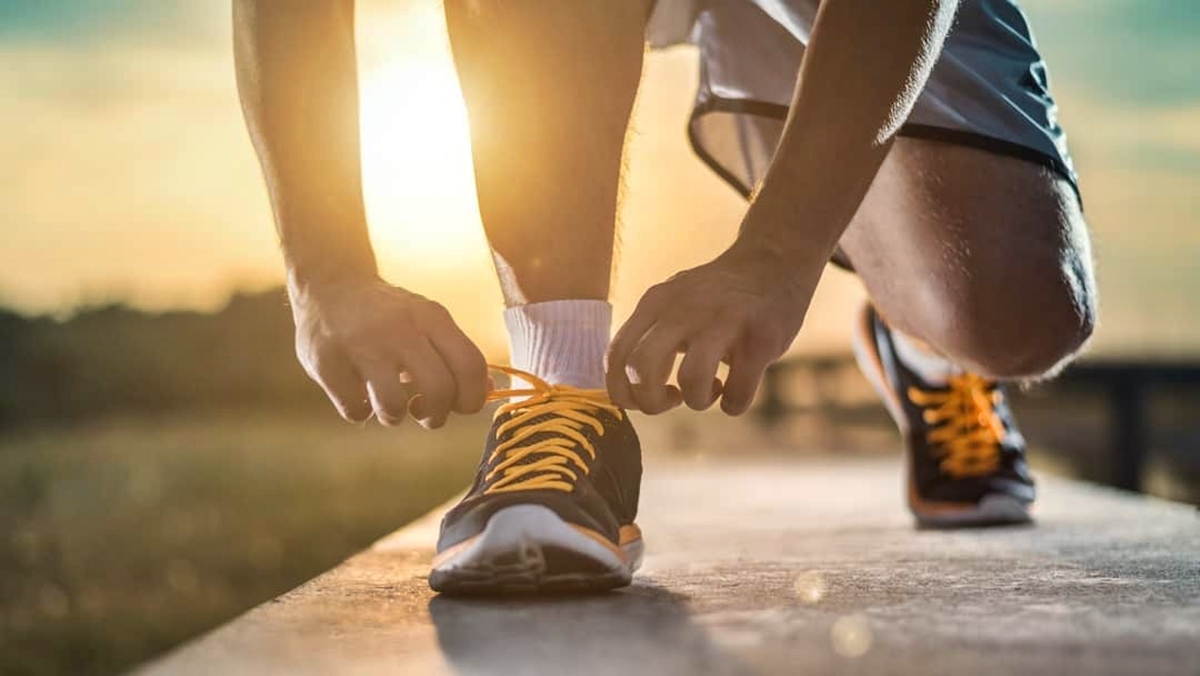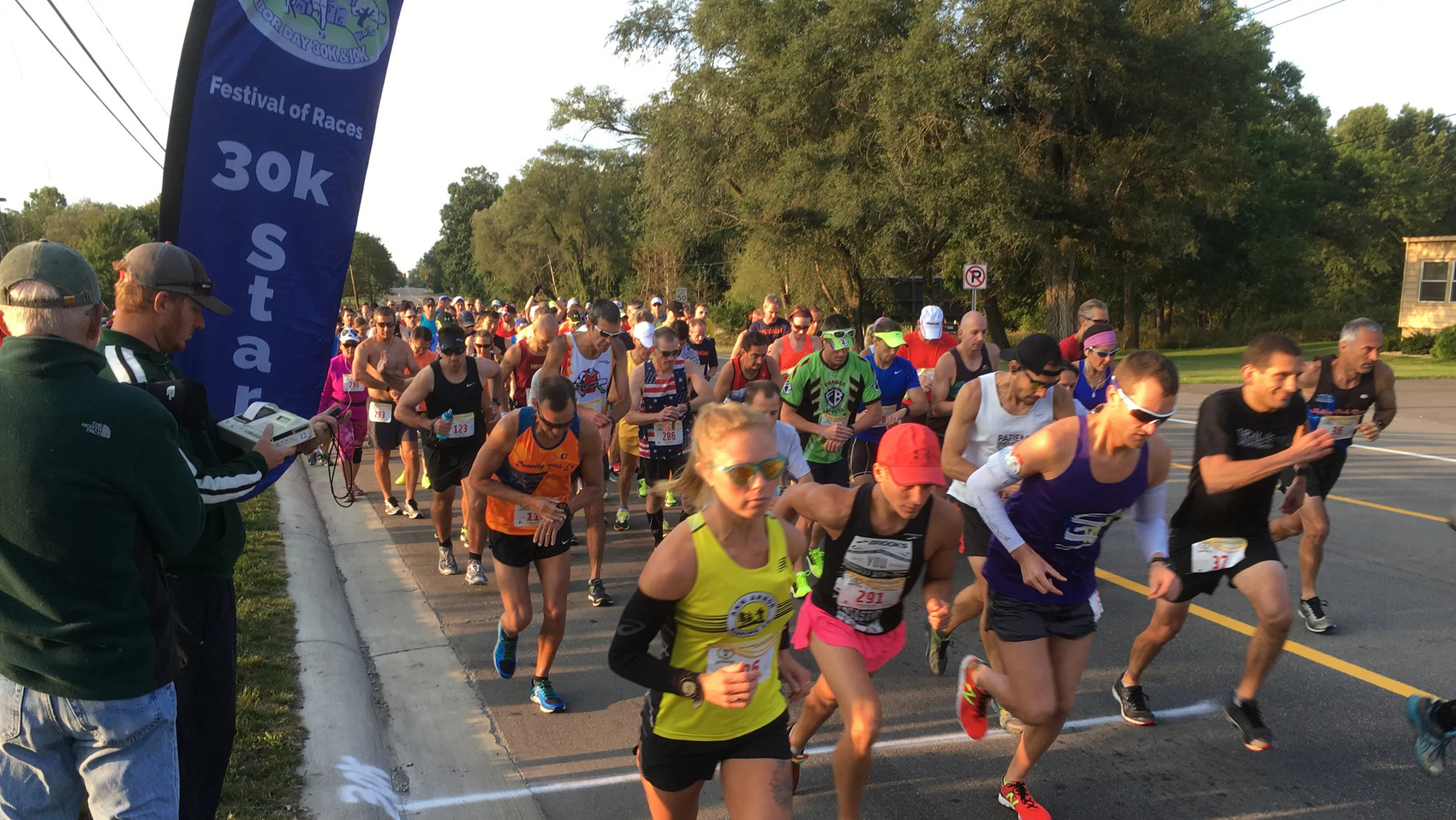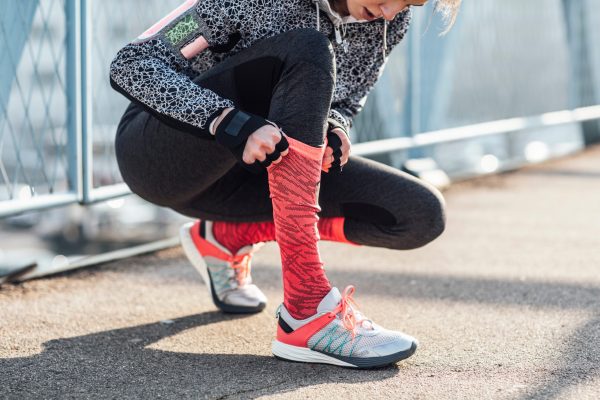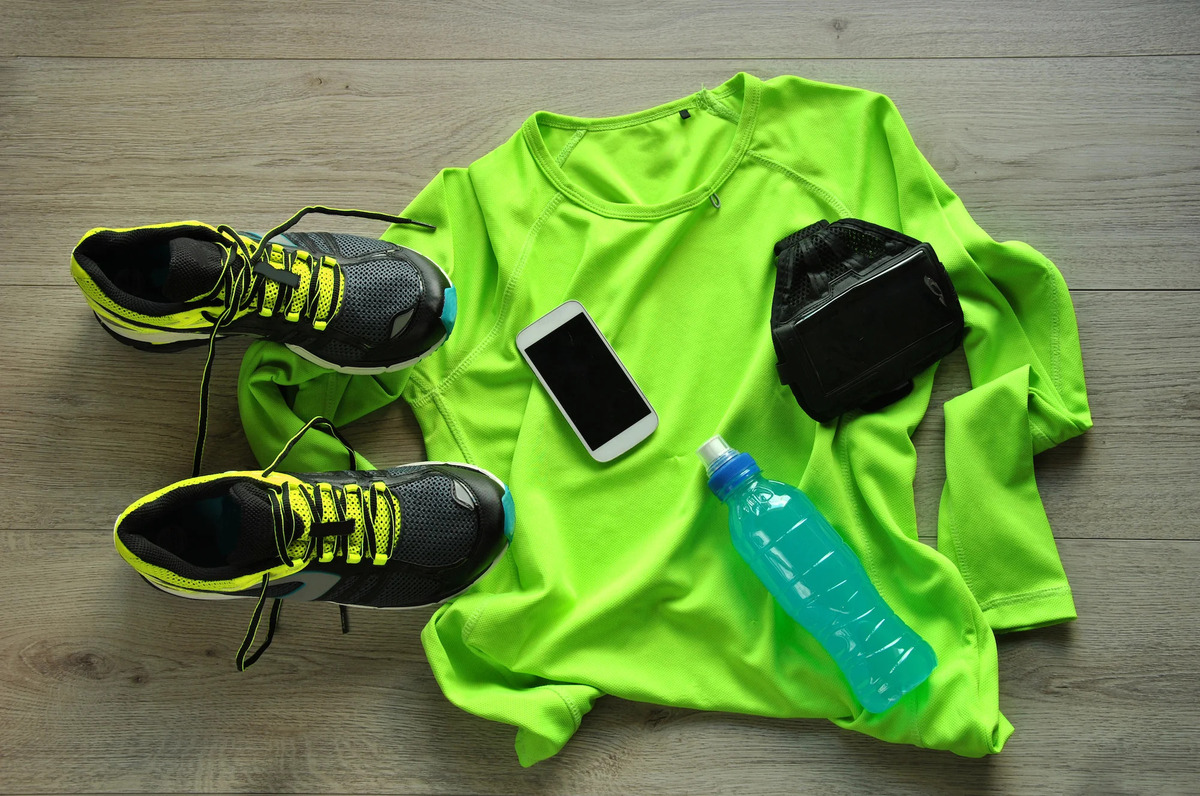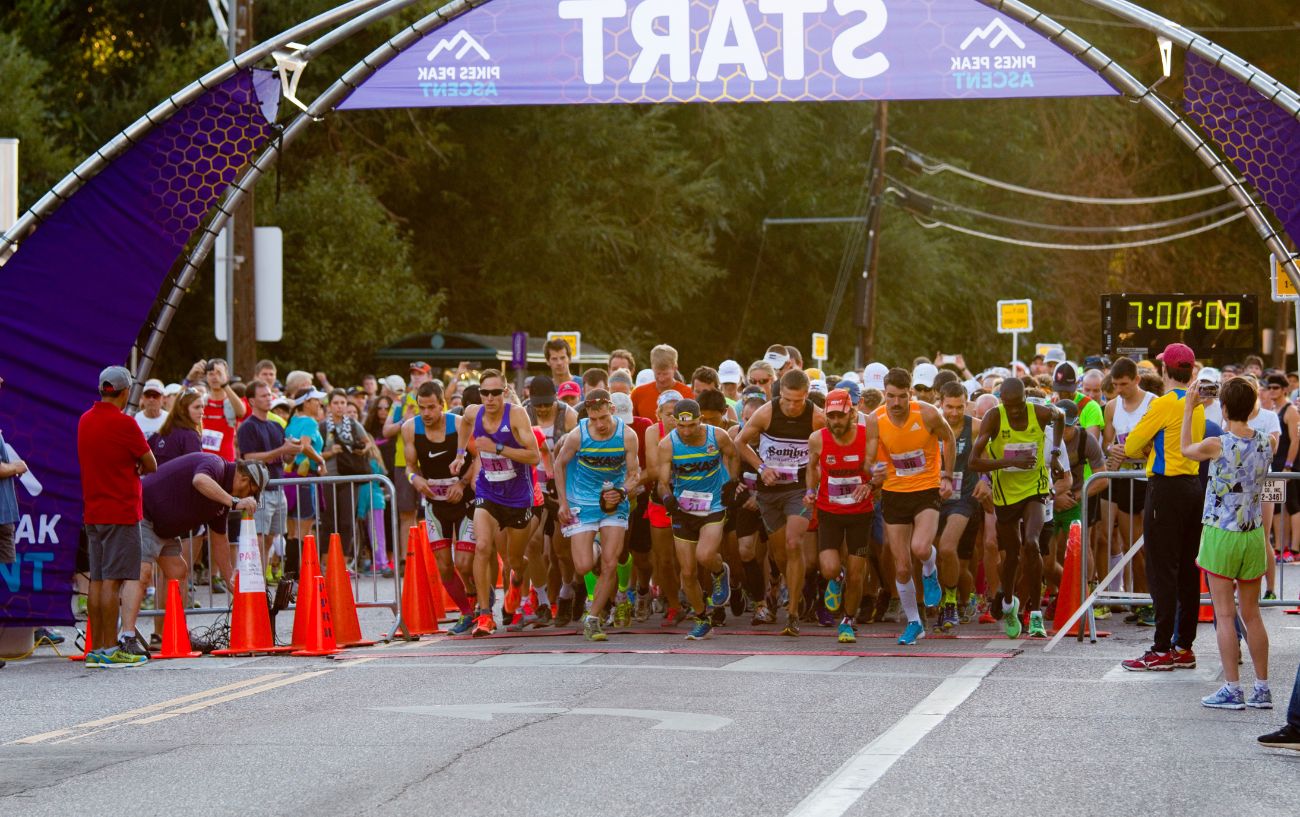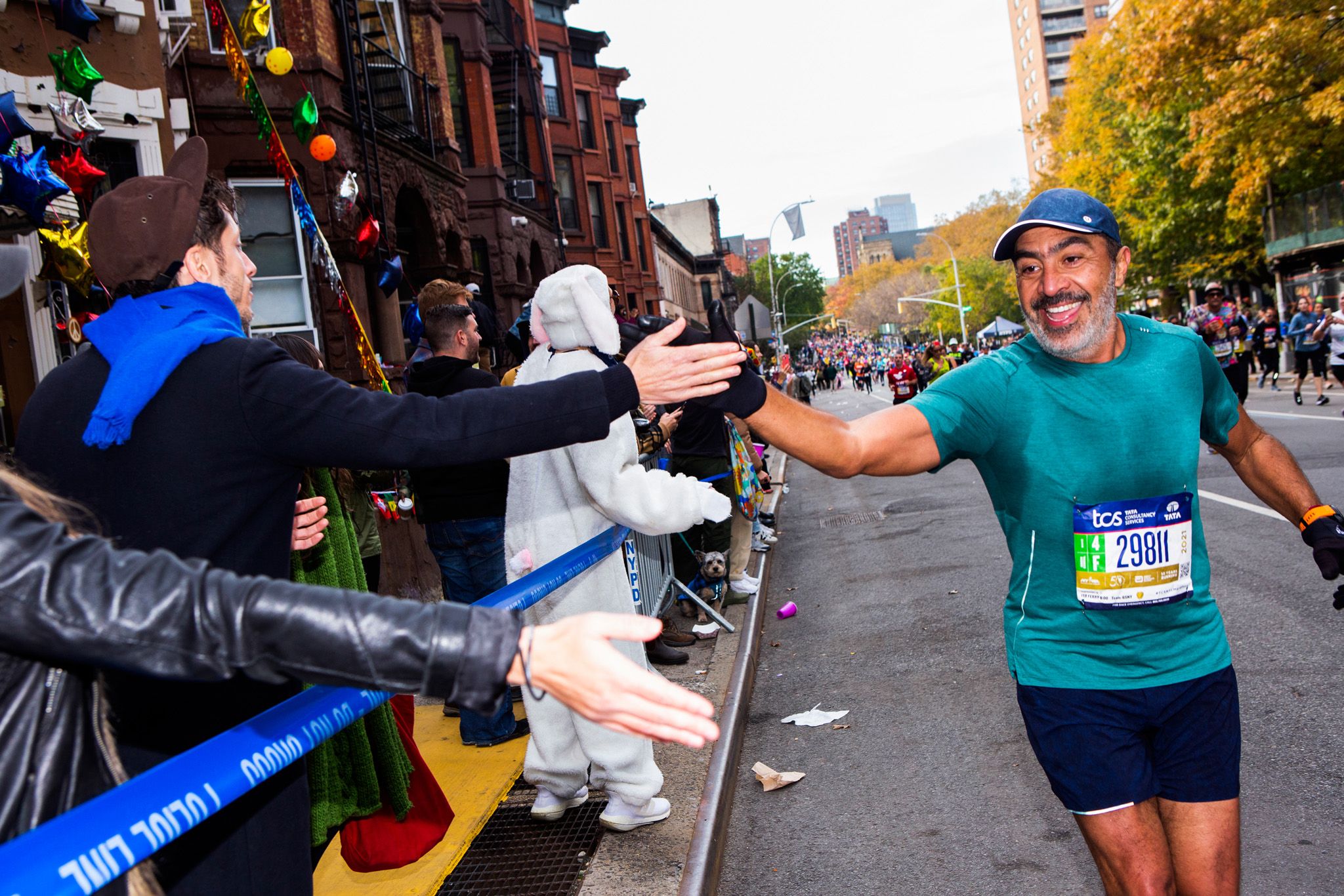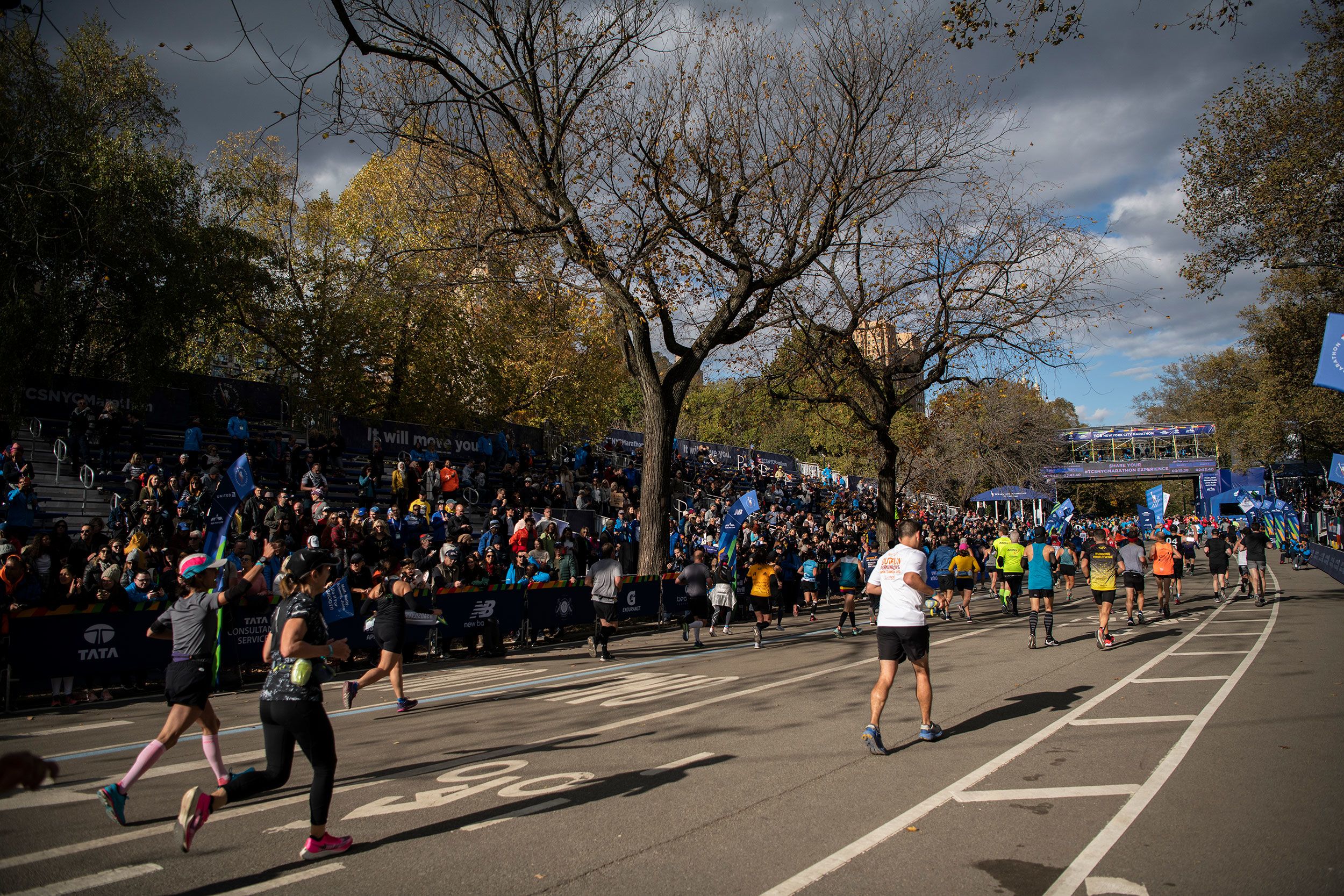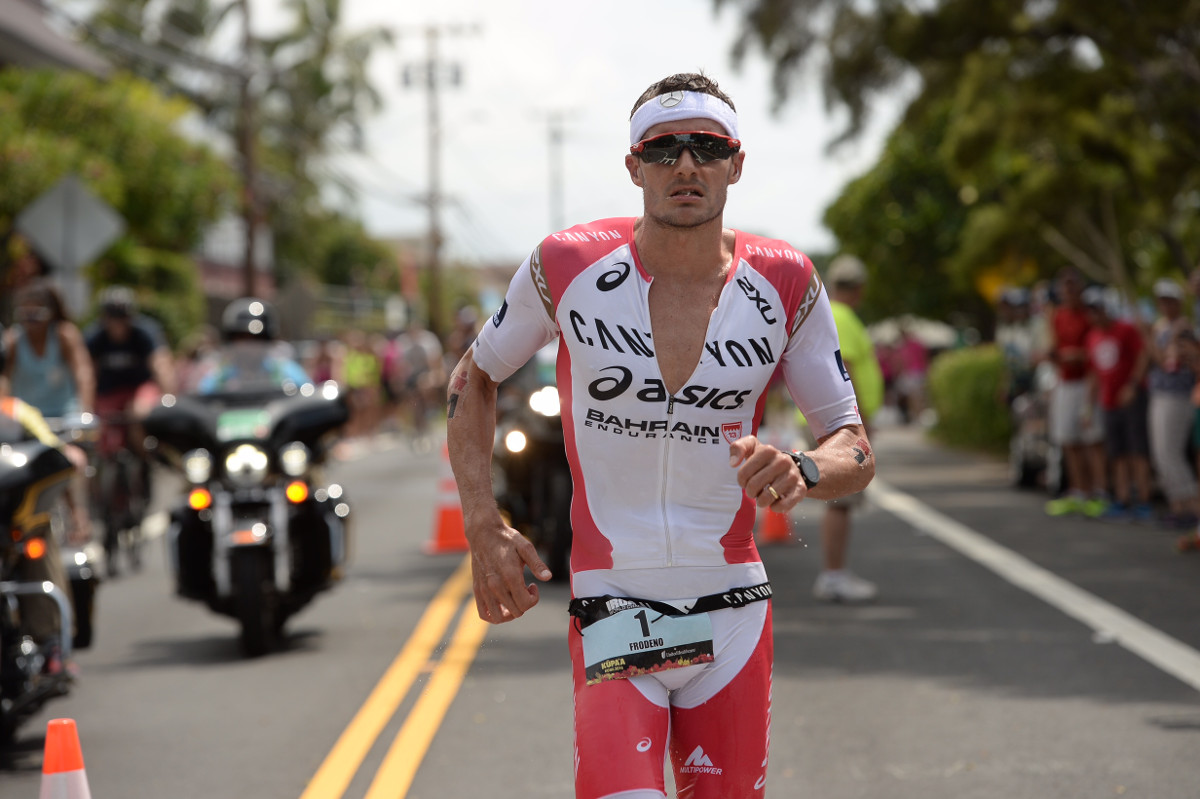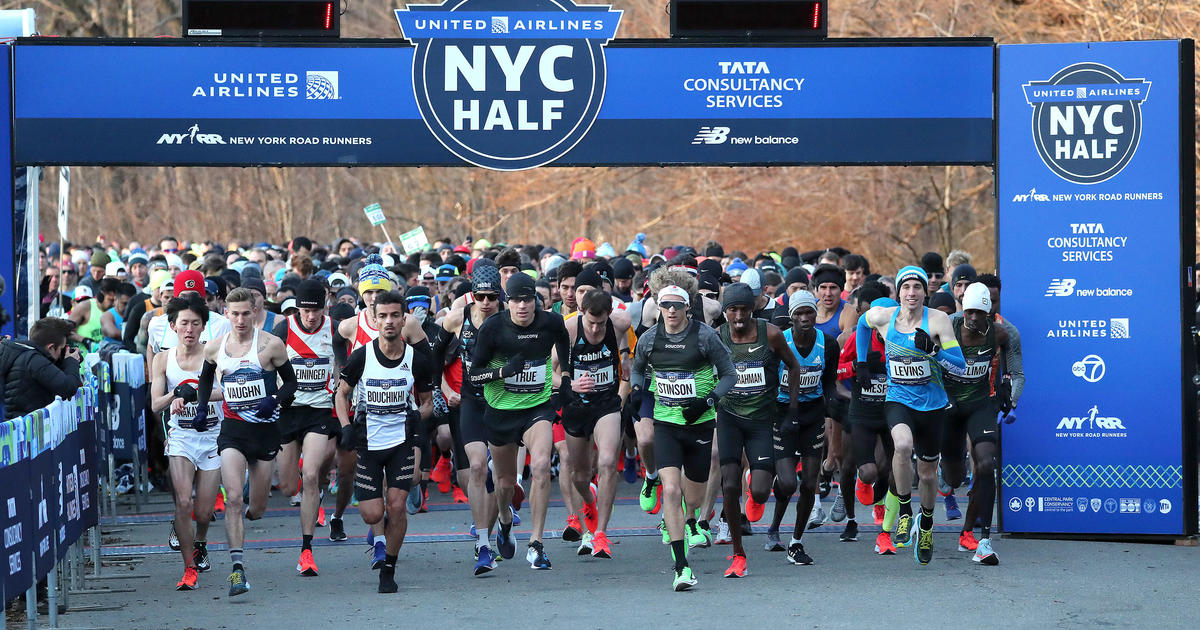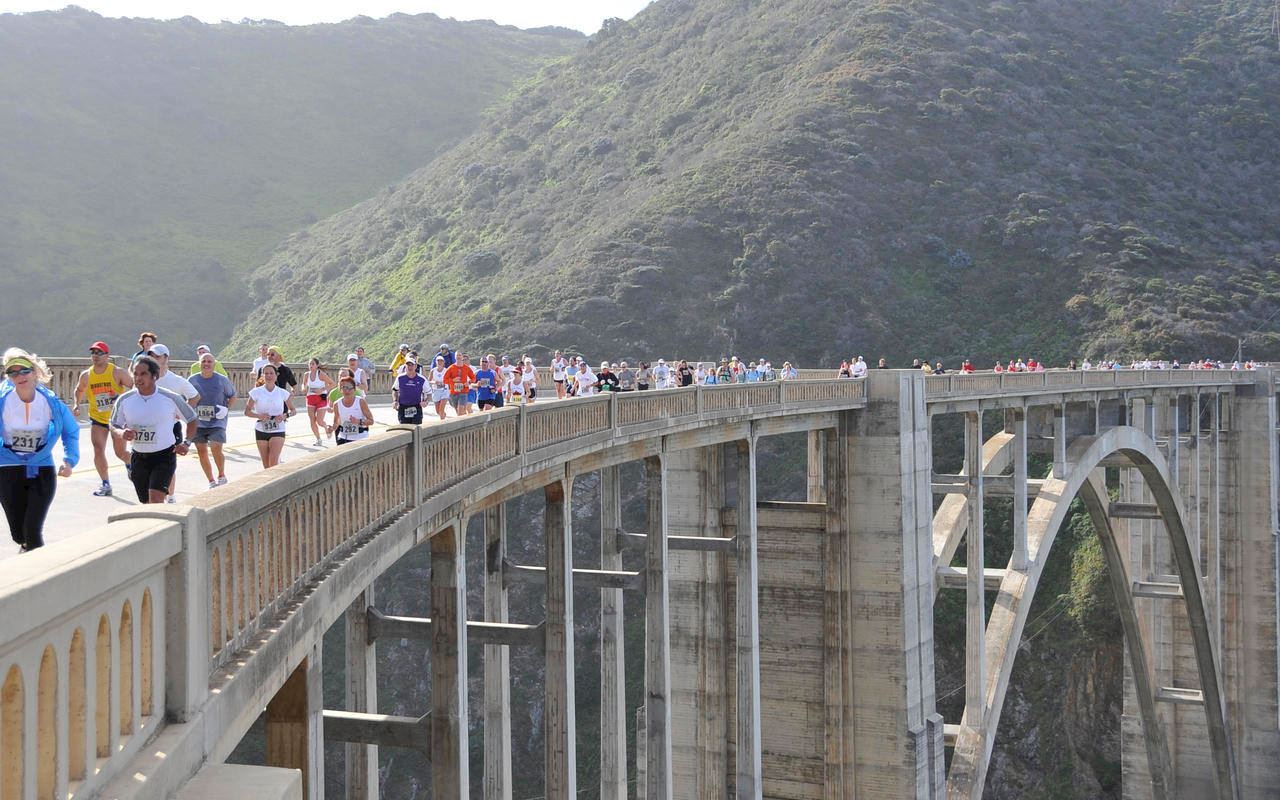

Featured
When Is The Big Sur Marathon
Modified: January 22, 2024
Find out when the Big Sur Marathon takes place and be a part of this featured event! Discover the dates and join runners from around the world in this scenic and challenging race.
Introduction
Welcome to the world of marathon running, where the thrill of pushing your limits is combined with the stunning beauty of nature. And when it comes to marathons, few races can rival the magnificence of the Big Sur Marathon.
The Big Sur Marathon is not just a race; it’s an experience like no other. Held annually along the breathtaking coastal highway of California, this marathon attracts thousands of participants and spectators from all around the world. It offers a challenging course, awe-inspiring scenery, and a sense of camaraderie that is hard to find elsewhere.
Whether you’re an avid runner looking to conquer your next marathon or a spectator hoping to witness the resilience and determination of athletes, the Big Sur Marathon is an event that should not be missed.
In this article, we will dive into the history, route, training tips, and other details about the Big Sur Marathon. Whether you’re considering participating in the race or simply interested in learning more about it, this guide will provide you with all the information you need. So, let’s lace up our running shoes and get ready to explore the captivating world of the Big Sur Marathon!
History of the Big Sur Marathon
The Big Sur Marathon originated in 1986 and has since become one of the most prestigious and iconic races in the world of long-distance running. Its inception was inspired by the stunning coastal scenery along Highway 1 in California and the desire to create a race that would showcase the natural beauty of the region.
What started as a modest event with just 198 runners has now evolved into a globally renowned marathon, attracting participants from over 30 countries. The race takes place on the last Sunday in April, allowing runners to enjoy the mild spring weather and the picturesque landscapes that stretch along the California coastline.
Over the years, the Big Sur Marathon has become synonymous with its challenging course. Dubbed the “runner’s Everest,” the race boasts a hilly and undulating route that tests the endurance and mental fortitude of even the most seasoned runners. From the steep climb at Hurricane Point to the thrilling descent at Bixby Bridge, each mile of the course presents a new challenge and a chance to appreciate the magnificence of the surrounding environment.
In addition to the breathtaking scenery, the Big Sur Marathon is known for its vibrant and supportive atmosphere. The race prides itself on creating an inclusive and welcoming environment, where participants of all abilities are cheered on by enthusiastic spectators lining the course. From the inspiring stories of first-time marathoners to the incredible feats of elite runners, the Big Sur Marathon embodies the spirit of determination and triumph.
Throughout its history, the Big Sur Marathon has also been committed to giving back to the community and supporting charitable causes. The marathon has raised millions of dollars for local organizations, contributing to initiatives that enhance education, health, and the environment in the Big Sur region.
The Big Sur Marathon is not just a race; it is an embodiment of perseverance, natural beauty, and the power of community. With its rich history and enduring legacy, the Big Sur Marathon continues to inspire and captivate athletes and spectators alike, making it a standout event in the world of marathon running.
Route and Course Details
The Big Sur Marathon is renowned for its stunning and challenging course, which winds its way along the picturesque coastal highway of California. Spanning a distance of 26.2 miles, the route offers a unique blend of natural beauty, breathtaking views, and demanding hills that will test even the most seasoned runners.
The marathon begins in the picturesque town of Big Sur and takes runners on a journey unlike any other. As participants start their race, they are immediately greeted by breathtaking views of the rugged coastline and crashing waves. The first few miles offer a relatively flat stretch, allowing runners to find their rhythm and soak in the scenic splendor surrounding them.
However, the true test of strength begins around mile 10, as runners approach the infamous Hurricane Point. This towering hill demands mental and physical resilience, challenging participants to conquer its steep incline. As runners conquer Hurricane Point, they are rewarded with panoramic views of the Pacific Ocean and a sense of accomplishment that fuels them for the rest of the race.
After conquering Hurricane Point, the course meanders through rolling hills, providing a mix of challenging climbs and thrilling descents. One of the most iconic landmarks along the route is the majestic Bixby Bridge, which marks the halfway point of the marathon. As runners cross the bridge, they are greeted by the cheers of spectators and the beauty of the coastal cliffs below.
As the race continues, participants are treated to breathtaking views of the surrounding mountains, lush forests, and charming coastal communities. The course offers a variety of terrains, from winding roads to scenic trails, ensuring that runners are constantly engaged and inspired by their surroundings.
For the final miles of the marathon, participants approach Carmel, a picturesque town known for its quaint charm. The finish line awaits at the historic Crossroads Shopping Village, where participants are greeted by a jubilant crowd of spectators and fellow runners. Crossing the finish line at the Big Sur Marathon is not just a personal triumph but also a celebration of endurance, perseverance, and the beauty of the human spirit.
Whether you’re a seasoned marathoner or a first-time participant, the route of the Big Sur Marathon promises an unparalleled experience. With its challenging hills, breathtaking vistas, and an abundance of natural beauty, this course is truly a feast for the senses and a testament to the remarkable spirit of marathon running.
Training for the Big Sur Marathon
Preparing for the Big Sur Marathon requires careful planning, dedication, and most importantly, a well-rounded training program. Training for this challenging race involves not only building endurance but also developing the strength and mental resilience necessary to conquer the hilly course. Here are some key aspects to consider when training for the Big Sur Marathon:
1. Build a Solid Base
Prior to starting a marathon training program, it is essential to have a solid base of running fitness. This typically involves a consistent running routine of at least a few months, gradually increasing mileage and running frequency. Building a base helps prevent injuries and prepares the body for the demands of marathon training.
2. Incorporate Hill Training
Given the challenging hills of the Big Sur Marathon course, incorporating hill training into your workouts is crucial. Hill repeats, where you run up and down a hill multiple times, help build strength and improve cardiovascular fitness. Focus on maintaining good form, using your arms to drive yourself up the hill, and controlling your descent.
3. Long Runs
Long runs are a cornerstone of marathon training. Gradually increase your long run distance over the course of your training, simulating the demands of the marathon by running on hilly terrain when possible. These runs help build endurance, mental fortitude, and confidence in your ability to conquer the full marathon distance.
4. Tempo Runs
Tempo runs, also known as lactate threshold runs, are a valuable training tool for increasing your running speed and stamina. These runs involve sustaining a challenging pace for a prolonged period, closer to your race pace. Incorporate tempo runs into your training program to improve your overall running performance.
5. Cross-Training and Strength Training
Don’t neglect cross-training activities like cycling, swimming, or strength training. These activities help improve overall fitness, prevent injuries, and strengthen muscles not typically engaged in running. Incorporate cross-training sessions into your weekly routine to enhance your marathon preparation.
6. Rest and Recovery
Allowing your body ample time to rest and recover is just as important as the training itself. Plan rest days into your training schedule and prioritize sleep, nutrition, and self-care practices. This will help prevent burnout, reduce the risk of injury, and ensure you are well-prepared for race day.
Training for the Big Sur Marathon requires a balance of consistency, commitment, and smart training practices. By following a well-designed training program, incorporating hill work, long runs, tempo runs, cross-training, and prioritizing recovery, you’ll be well-prepared to tackle the challenges of the Big Sur Marathon course and cross that finish line with a sense of accomplishment and pride.
Participating in the Big Sur Marathon
Participating in the Big Sur Marathon is an incredible experience that brings together runners from all walks of life to conquer the challenging course and immerse themselves in the breathtaking beauty of the California coastline. Here are some key aspects to consider when planning to participate in the Big Sur Marathon:
1. Registration
Registration for the Big Sur Marathon typically opens several months in advance, and spots fill up quickly due to the race’s popularity. Be sure to mark the registration date on your calendar and secure your spot early to avoid disappointment. Keep an eye on the official marathon website for updates and registration details.
2. Training and Preparation
Embarking on a comprehensive training program is crucial to ensure you are physically and mentally prepared for the challenges of the marathon. Follow a structured training plan, gradually increase mileage, and incorporate hill training to build strength and endurance. Stay consistent, listen to your body, and seek guidance from professional coaches if needed.
3. Logistics and Travel
The Big Sur Marathon takes place in the scenic coastal region of California, so consider travel arrangements and accommodations well in advance. Book your accommodation near the race start or finish line to minimize logistical challenges. Arrive a day or two early to acclimate to the local environment and avoid any last-minute stress.
4. Gear and Attire
Invest in a good pair of running shoes and ensure they are well broken-in prior to the race. Dress in comfortable moisture-wicking apparel suitable for the weather conditions on race day. Consider bringing layers as the coastal weather can be unpredictable. Stay hydrated and carry necessary running accessories such as a hydration pack, energy gels, and sunscreen.
5. Race Day Experience
Arrive at the starting line well-rested and fueled with a nutritious breakfast. Take advantage of the pre-race atmosphere by connecting with fellow runners, enjoying the excitement, and engaging in warm-up routines. Follow the race map, start at your designated corral, and maintain a comfortable pace throughout the race. Remember to enjoy the magnificent scenery and draw energy from the cheering spectators along the route.
6. Post-Race Celebration
Crossing the finish line at the Big Sur Marathon is an accomplishment worth celebrating. Take a moment to savor the moment, collect your finisher’s medal, and pose for photos. Replenish your body with the provided post-race refreshments and engage with fellow runners to share stories and experiences. Consider exploring the local area, treating yourself to a celebratory meal, or taking a well-deserved post-race rest.
Participating in the Big Sur Marathon is an experience that extends beyond the race itself. It is an opportunity to challenge yourself, appreciate the beauty of nature, and create lifelong memories. Embrace the journey, cherish the camaraderie, and make the most of this remarkable event.
Spectating at the Big Sur Marathon
The Big Sur Marathon is not only a race for the participants but also an incredible event for spectators. Cheering on the runners as they conquer the challenging course and immersing yourself in the vibrant race atmosphere is an experience like no other. Here are some tips to make the most of your spectating experience at the Big Sur Marathon:
1. Plan Your Spectating Locations
Study the race route and choose strategic locations where you can catch multiple views of the runners. Popular spots include the starting line in Big Sur, the iconic Bixby Bridge, and the finish line at the Crossroads Shopping Village in Carmel. Arrive early, as some areas may become crowded closer to race time.
2. Bring Your Support Gear
Support the runners by creating colorful signs or banners to cheer them on. Make sure your signs are large and easy to read from a distance. Balloons, noisemakers, and cowbells are also great additions to create an energetic and encouraging atmosphere that motivates the runners.
3. Be Mindful of Runner Safety
While spectating, it’s important to prioritize the safety of the runners. Stay behind designated barriers and avoid obstructing the runners’ path. Cheer loudly and offer words of encouragement, but be mindful not to interfere with the race flow or distract the participants.
4. Capture the Moment
Don’t forget your camera or smartphone to capture the unforgettable moments of the marathon. The stunning coastal views and the determined faces of the runners make for incredible photo opportunities. Share your photos on social media using the official race hashtags to connect with other spectators and participants.
5. Explore the Surrounding Area
While you wait for the runners to reach your designated spectating location, take the opportunity to explore the beautiful surroundings. Visit nearby landmarks, enjoy local cuisine, or take a scenic hike to truly appreciate the natural beauty of the Big Sur region.
6. Offer Support and Motivation
As the runners pass by, provide them with words of encouragement and applause. Your support can make a significant difference in their energy levels and mindset. Cheer for all participants, from the elite runners to the back-of-the-pack marathoners, and let them know that their efforts are appreciated.
Spectating at the Big Sur Marathon offers a unique opportunity to witness the determination, resilience, and unwavering spirit of the participants. By following these tips, you can make the most of your spectating experience and contribute to the unforgettable atmosphere of this iconic race.
Accommodations for the Big Sur Marathon
Planning accommodations for the Big Sur Marathon is an important aspect of ensuring a comfortable and stress-free race experience. The following tips will help you find the ideal place to stay during your time in the Big Sur region:
1. Book Early
Due to the popularity of the Big Sur Marathon, accommodations in the area tend to fill up quickly. It is recommended to book your accommodations well in advance, ideally as soon as your registration for the race is confirmed. This will help secure the best options and ensure availability.
2. Consider Location
When choosing accommodations, consider the proximity to the race start or finish line. Staying near the starting line in Big Sur allows for a convenient and stress-free race morning. Alternatively, staying near the finish line in Carmel ensures easy access to post-race celebrations and transportation options.
3. Explore Nearby Towns
If you are unable to find accommodations in Big Sur or Carmel, consider exploring nearby towns such as Monterey or Pacific Grove. These towns offer a range of lodging options and are just a short drive away from the race start and finish line. It is advised to book accommodations with easy access to Highway 1 to minimize travel time on race day.
4. Check for Race Packages
Some hotels and resorts in the area offer special race packages for Big Sur Marathon participants. These packages may include discounted rates, transportation to the starting line, early breakfast options, and other amenities tailored to the needs of runners. Look for these packages when making your accommodation reservations.
5. Accommodations Amenities
Consider the amenities that are important to you during your stay. If you prefer to prepare your own pre-race meals, look for accommodations with kitchenettes or in-room refrigerators. If relaxation is a priority, seek out accommodations with spa facilities or access to nearby wellness centers.
6. Local Recommendations
Reach out to the race organizers or locals in the area for recommendations on accommodations. They might be able to provide insights on hidden gems or lesser-known options that offer a unique experience in the Big Sur region.
Remember, finding the right accommodations for the Big Sur Marathon is an essential part of ensuring a memorable and enjoyable race experience. Plan early, consider the location, and explore the various options available to make your stay as comfortable and convenient as possible.
Frequently Asked Questions (FAQs) about the Big Sur Marathon
As one of the most iconic marathons in the world, the Big Sur Marathon often generates numerous questions from participants and spectators alike. Here are some frequently asked questions and their answers to help you better understand this prestigious race:
1. What is the time limit for completing the Big Sur Marathon?
The time limit for the Big Sur Marathon is 6 hours. Participants must maintain a pace of approximately 13:45 minutes per mile to finish within the allotted time.
2. Are there aid stations along the course?
Yes, there are numerous aid stations positioned along the course, typically located approximately every 2-3 miles. These aid stations offer water, sports drinks, and snacks to help runners stay hydrated and fueled throughout the race.
3. Can I wear headphones during the race?
While headphones are allowed during the Big Sur Marathon, it is recommended to keep the volume at a low level or use only one earbud to maintain awareness of your surroundings and ensure your safety during the race.
4. Are there pacers available for the Big Sur Marathon?
No, there are no official pacers provided for the Big Sur Marathon. However, many runners participate in groups or connect with fellow runners to support each other and help maintain a desired pace during the race.
5. Is there a half marathon option available?
Yes, the Big Sur Marathon also features a half marathon option for those who prefer to tackle the shorter distance. The half marathon follows a different course but still offers stunning views and a memorable running experience.
6. Can I transfer or defer my registration if I am unable to participate?
It is possible to transfer or defer your registration for the Big Sur Marathon, but specific policies and deadlines apply. It is best to refer to the official race website or contact the race organizers for detailed instructions on transferring or deferring your registration.
7. Are there any age restrictions for participating in the Big Sur Marathon?
Participants must be at least 16 years old to participate in the Big Sur Marathon. However, the Big Sur Marathon Foundation also hosts a separate “Just Run” program for younger participants, aimed at promoting health and fitness.
8. Can I fundraise for a charity during the Big Sur Marathon?
Absolutely! The Big Sur Marathon has a charity program that allows participants to raise funds for various charitable organizations. You can find more information about the official charity partners and fundraising options on the race website.
These are just a few of the commonly asked questions about the Big Sur Marathon. For any specific inquiries or further details, it is recommended to consult the official race website or reach out to the race organizers directly. Remember, thorough preparation and familiarization with the race details will enhance your overall experience on race day.
Conclusion
The Big Sur Marathon is a race that combines physical challenges with the awe-inspiring beauty of the California coastline. From its humble beginnings to its current status as a world-renowned marathon, the Big Sur Marathon has captivated the hearts of runners and spectators alike.
With its challenging hills, breathtaking views, and vibrant atmosphere, participating in or spectating at the Big Sur Marathon is a truly remarkable experience. The race allows participants to push their limits, celebrate their achievements, and join a community of passionate runners from around the globe.
Whether you choose to participate in the marathon, cheer on the runners from the sidelines, or simply explore the surrounding area, the Big Sur Marathon offers something for everyone. It is an opportunity to marvel at the coastal cliffs, rejoice in personal triumphs, and forge lasting memories.
As you prepare for your journey, ensure that you follow a comprehensive training regimen, book accommodations well in advance, and familiarize yourself with the logistics of the race. Whether you’re aiming for a personal best or simply seeking to soak in the beauty of the course, the Big Sur Marathon promises an unforgettable adventure.
Remember, at the Big Sur Marathon, it’s not just about crossing the finish line—it’s about embracing the thrill of the race, appreciating the natural wonders around you, and connecting with fellow runners who share your passion. So lace up your running shoes, bring your enthusiasm, and get ready to embark on an extraordinary journey at the Big Sur Marathon!
